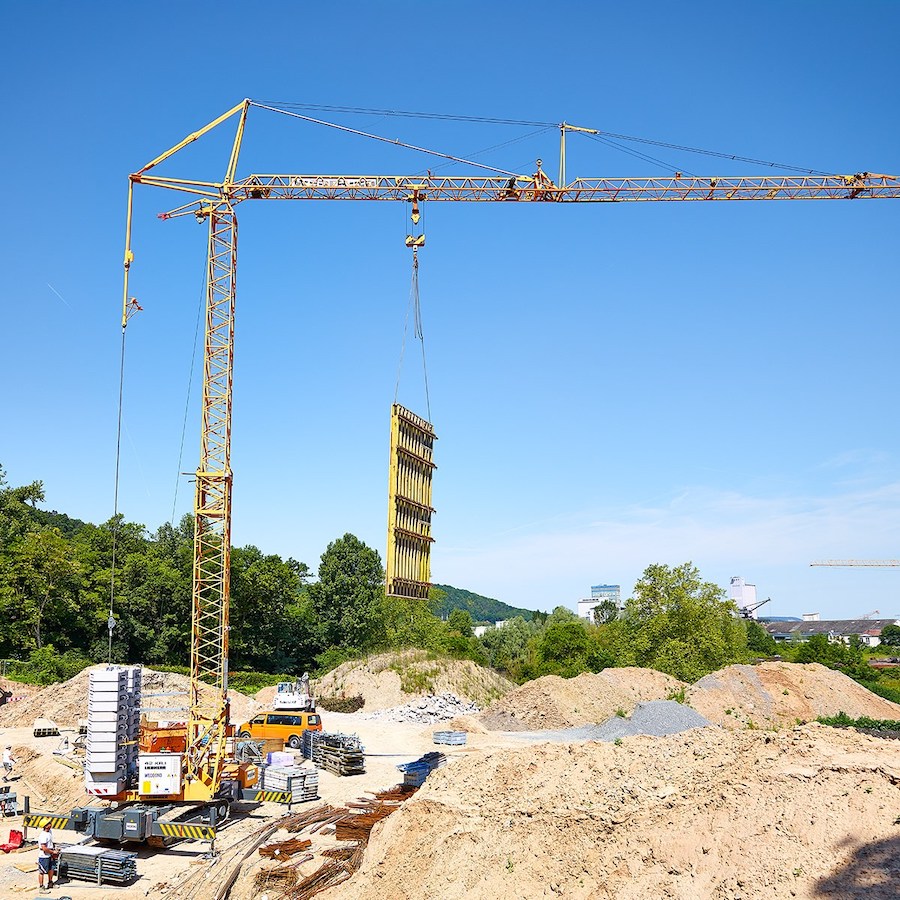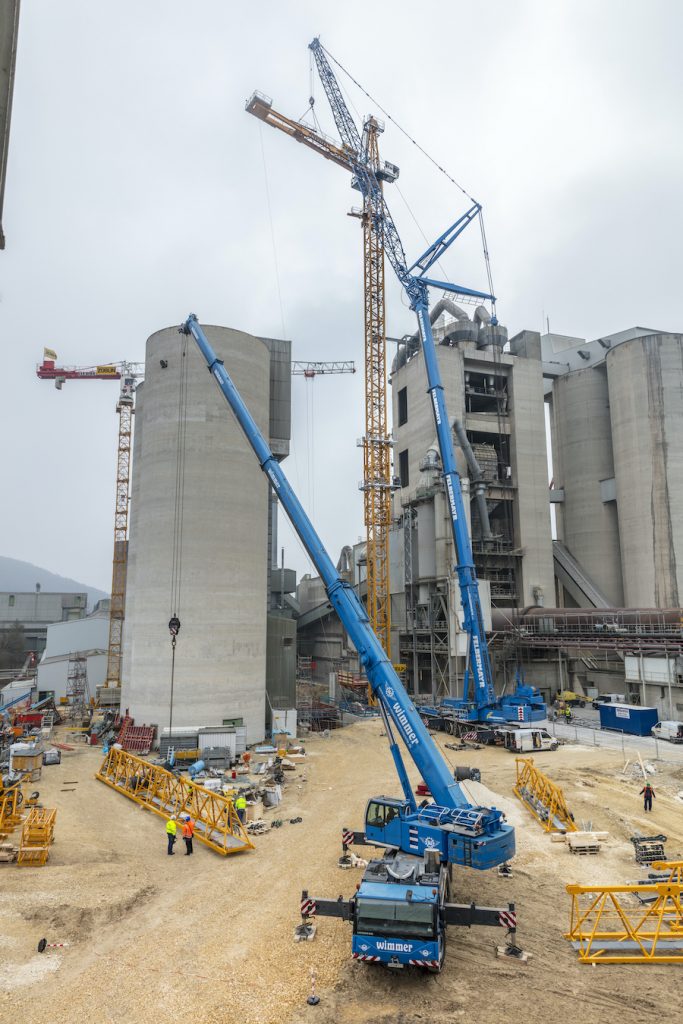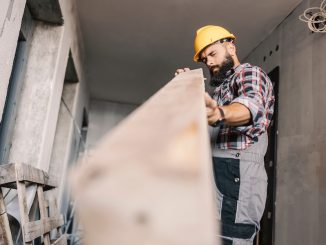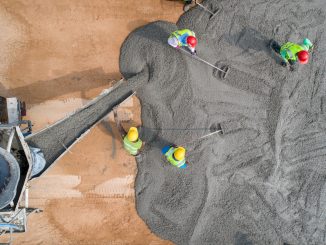View the complete article here.
In some cities, tower cranes have become part of the skyline. They seem to be everywhere – constructing high-rises and other tall structures. The mechanics of setting up a tower crane are not that complicated. But their size alone adds complexity to the operation. In a city filled with people and structures in close proximity to the job site — the difficulty increases exponentially. In this article, we discuss how to safely install a tower crane.
Tower Crane Pre-Installation
There are several preparation steps you’ll need to complete to successfully install your tower crane. They include:
Disassembly
A tower crane is often being moved from another job site. So the first task in preinstallation is disassembling the tower crane in preparation for transport.
Loading
Loading large pieces of heavy equipment for transport is its own project. There are state and federal laws related to safely loading and securing oversized equipment.
Transport
Once your tower crane is loaded up, it has to be safely transported to the job site. To learn more about transporting heavy equipment, read The Ultimate Guide to Transporting Hammers, Rigs, And Other Heavy Equipment in the October issue of Pile Buck.
Unloading
An experienced crew needs to be on the ready to unload your tower crane upon arrival.
Paperwork
We just sucked the fun right out of this tower crane installation job, right? There is a lot of coordination that takes place in getting a tower crane erected on a job site. Various local agencies need to know that this mammoth piece of equipment is being transported and installed. Especially in densely-populated areas.

Tower Crane Selection
The most important decision is selecting the right tower crane for the job. Options include:
Hammerhead
A hammerhead is the most frequently used tower crane. It has a large tower with a tiny cab running through the masts.
Derrick
A Derrick tower crane is small and designed specifically for compact areas. Unlike other tower cranes, this one doesn’t need an additional foundation.
Luffing Jib
A luffing jib tower crane uses a diagonal arm that extends from the top. Because of this crane’s unique weight distribution, it can easily hold massive loads.
Self-Supporting
A self-supporting tower crane is used for tasks that don’t require substantial height.
Self-Climbing
A self-climbing tower crane requires a strong concrete base to keep it stable as it slowly extends upward to reach the necessary height. Once erected to the desired height, the tower crane is attached to a nearby structure.
Traveling
A traveling tower crane is commonly used in large projects where loads need to be moved quickly. Traveling tower cranes are usually track-mounted and move loads horizontally along the masts.
Tower Crane Overview
Every type of tower crane generally works in the same way. Most tower cranes require that its base be bolted down to a concrete platform. The base is connected to the tower (mast). The gear and motor that rotate the crane (called a slewing unit) is attached to the top of the mast. On top of the gear and motor assembly are three parts:
Horizontal jib. This is the tower crane’s arm that carries the load. A trolley runs along this working arm to move the load to and from the center of the crane.
Machinery arm. This is where the crane’s counterweights, motors, and electronics reside.
Operator’s cab. The cab contains the controls to move the tower crane.

5 Steps to Setting Up a Tower Crane
There are generally five steps to setting up your tower crane.
Step 1 – Find the Right Location
To begin this process, you’ll want to search for the right placement. If you position the tower crane in a place that’s too small or near electrical wires, you risk it falling apart or ripping down the cables. In most cases, there are strict placement rules that need to be followed, such as placing the tower crane at least 10-feet away from power lines.
You’ll want to make sure the tower crane is in a somewhat open space so it can freely move side-to-side. You’ll also need to keep wind patterns in mind. If you place the tower crane in a strong current, it will stress the machine and could cause it to topple over. To prevent this, research the area and check local guidelines.

Step 2 – Build the Foundation
The second step to building a tower crane is to create its foundation. This is one of the most crucial steps because it’s what keeps it stable during operation.
For most tower cranes, you’ll find this information embedded in its technical data. This will guide you through the precise dimensions so you can determine the right jib length. Other key details you’ll find in the data include:
- The tower crane’s model
- Its maximum tower height
- Its initial and final weights
- The supply voltage
- The lifting cable branches
Once you determine the correct measurements, you’ll need to dig a five-foot hole and create a concrete block. This block will vary in its dimensions but will usually need to be about 30 x 30 feet.
After the foundation has been laid, it’s ideal to wait a few days for it to settle. You’ll want to periodically check the base to ensure it isn’t sinking or not settling correctly. If you notice issues, it may need to be redone. This falls into the “better safe than sorry” category.
Step 3 – Attach the Tower to the Foundation
Next, you’ll connect the tower to the foundation. To do this, link the first mast to the base. In most cases, you’ll need to fasten it to the thick anchor bolts sticking out of the substructure. This will provide adequate support and keep the tower crane flexible but stable. Once the tower’s first mast is in place, you’ll need to keep stacking the masts until you reach the desired height.
You’ll want to monitor the base throughout the tower crane’s usage to ensure its elevation is correct and that it can handle the load.
Step 4 – Add the Slewing Components
When the tower has been properly affixed to the foundation, you’ll need to add the slewing assembly. This is composed of various loads that help the tower crane move in different directions.
Step 5 – Adjust the Crane’s Height
The last step is to modify the crane’s height to fit the project. You can increase or decrease the height by using the slewing assembly alongside a hydraulic jack.
Post-Installation Tower Crane Inspection
You’ll want to do a complete inspection and load test of the tower crane after installation. Pay special attention to structural elements – these will handle the most stress during the overhead load test. You will re-inspect after the test. If you notice pieces leaning or small cracks, you need to immediately fix them. These are signs that the tower crane isn’t steady. Cracks may indicate that the tower crane can’t handle the load. A licensed technician should inspect the tower crane’s limit switches, cables, and brakes before operating it.
Tower Crane Certification Courses
To help you better understand how to safely install a tower crane, consider taking a tower crane certification course. This is led by experts and will guide you through the process.
Bigfoot Crane Company offers an extensive class. With it, you’ll discover how to inspect tower crane pieces, install them, maintain the structure, and disassemble it upon project completion. You’ll also become well-versed in the American Society of Mechanical Engineers (ASME) codes.
Conclusion
Setting up a tower crane involves several steps. It is really a subproject of the overall construction project. You’ll likely need to dismantle an existing tower crane and move it to the new job site. Transporting heavy equipment is best left to the professionals. Once your tower crane is erected, a post-installation inspection, along with regular inspections, will keep the crew and the surrounding community safe.
View the complete article here.
What are the key steps in erecting a tower crane, and why is pre-installation paperwork crucial?
The key steps include disassembly, loading, transport, unloading, and paperwork; pre-installation paperwork is vital for coordination with local agencies and ensuring compliance.
How do you select the right tower crane for a construction job, and what are the advantages of different tower crane types?
The selection involves choosing from hammerhead, derrick, luffing jib, self-supporting, self-climbing, and traveling tower cranes; advantages vary, with factors like weight, cost, and versatility influencing the choice.












































